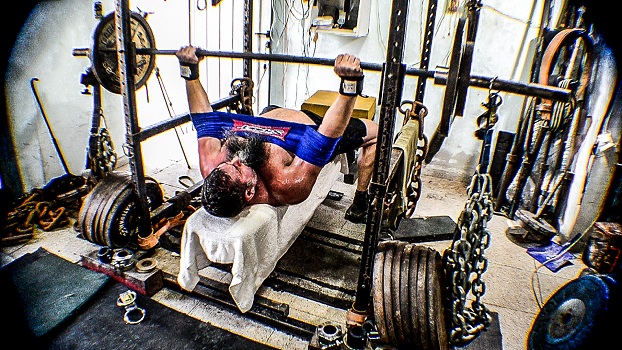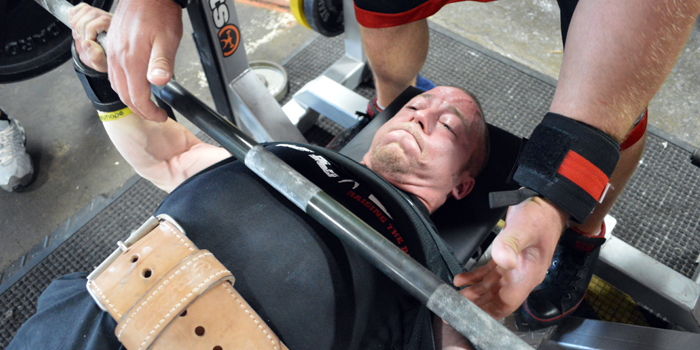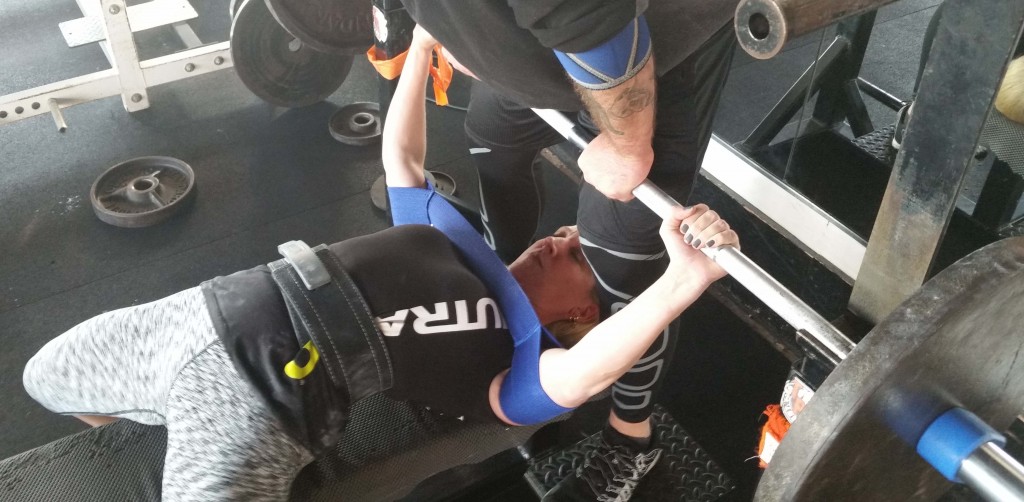
Now that I've given my body some rest after the APF Summer Bash, I've began to have some medial knee pain in my right knee. I'm still training hard, but I'm focusing on keeping my low back healthy and addressing my knee issues as well. The goal for 2017 is to end the year completely healthy and have a solid base to build a real training cycle on.
For programming and coaching inquires, please email SmitleyPerformanceSystems@gmail.com or visit brandonsmitley.com
Over the past few years, I've really grown to like the bench press. I used to hate this lift more than any other, probably because I was never any good at it until I learned how to really bench from people like Matt Ladewski, Matt Wenning, Harry Selkow, and others from attending Learn To Train Seminars. Now, everyone wants to know #HowMuchYaBench?
This specific log post is about the Slingshot, or any device that is similar, and should you use it? So let's get to it.
Generally the Slingshot is used to help with overload. Matter of fact, it's got it's roots from Westside Barbell when lifters would take a mini band and put it around their arms to get aid like a bench shirt. Thanks to Mark Bell, we now have something that is more popular and comfortable, and can be purchased at your own size, with varying degrees of assistance.
The other purpose of the Slingshot is to help build the triceps and protect the shoulders. Given that the device changes the strength curve for the movement, the triceps are forced to work more to lock out the overloaded weights. Add in the extra support at the bottom and you've got something that let's you move a weight through a range of motion with a bit more safety and longevity in your lifting career.
If you're an equipped competitor, the Slingshot usually is used for max effort work when they aren't training in their shirt, or even used to help handle loads before they get in their shirt.
Overall, it's just a very practical piece of training gear that can get a lot of use.
Now what you probably don't want to hear - I'm not a fan. Not even a little bit (for the raw lifter). Here's why.
1. Altered Movement Pattern - The Slingshot or any device similar changes your movement pattern. There is indeed a "groove" in these, and if you say there isn't, you're full of crap. What I mean by this is that there is a window where the weight wants to be, and if you're not in it, it's going to get hard or you're going to eat weight to the face. It's the raw lifters bench shirt. I personally don't like this if you compete raw. At no point in competition are you going to have this artificial window, so don't get used to it.
Solution: Add Chains. This will let you get overload and accommodating resistance, while also not having you grounded, or locked into a groove.
2. External Feedback Loops - When you have a Slingshot on, you get feedback from it. You can feel the pressure building up, you know when you're in groove or not, and just subtle adjustments might give you another 15-20 pounds. At no point are you going to have this feedback on competition day. If you rely on this too much, just having the proprioception for your benching will be off.
Solution: Add Reverse Bands. These will mimic the Slingshot but without the external feedback loops.
3. Too Much Overload - While there are various options for the Slingshot, generally I think people use one that gives them too much carryover/overload. Ideally, you'll only want about 10% overload ever in training. Anything else is just overkill and feeding your ego. Plus, everyone wants to talk about overtraining and doing too much work, yet are throwing on more gear and overload and frying their nervous system..but I digress.
Solution: Use smart loads or boards. Either program your overload to let you handle 102.5-105% if possible, let that be it. Using the boards is even safer as you can handle the load and not have to move the weight as far.
Now I'm sure you're thinking, that I'm just here to bash the Slingshot, and I'm definitely not. If I'm going to use a Slingshot, here's how I think you get your money's worth out of one AND benefit your training.
1. Dips - These are one of the best bench builders of all time, but they are difficult and not too shoulder friendly for some. The aided support in the bottom makes it friendlier and let's you still pound your triceps.
2. Push Ups - Slap the Slingshot on as a finisher for your triceps and knock out sets of 50-100. You'll get a wicked pump WITH occlusion. Coaches, use it to teach your athletes how to do a push up correctly and safely.
3. Getting Into Gear - If equipped lifting interests you, get one of these before getting a shirt. If you hate the Slingshot, you'll hate real gear. Also, if you are an equipped lifter, these are wonderful for max effort days without getting in the shirt, or to just use while you work up to those working weights, saving you time and energy.
4. Bum Shoulder - If you're just an older lifter or have had shoulder complications, this is a great option for you to still bench press but keep your shoulders a bit happier in the process.
At the end of the day, if you opt to use a Slingshot, it's really up to you. There are multiple ways to use one to benefit your training, but make sure you know why you're using a piece of equipment. Don't expect to use a cool device to let you handle more weight, but ingrain crummy movement patterns and just put a band-aid over what you really need to address, your technique and strength.











I have experienced negative effects from using a slingshot as a raw lifter, totally killed any explosiveness off the chest when not using it.
Some great alternatives given though that will help.
Thanks, enjoyed reading it.
Martin.
this is a very good overview, brandon
It definitely can help with the shoulder stuff, no doubt. Thanks for reading!
Thanks for reading, glad you enjoyed it. I would certainly agree that it would be a great tool given your training age and still trying to get after it. Some times you just got to do what can let you get under the bar. Best of luck with training!
I'm hitting bench 3x a week, Slingshot Monday, Normal Wednesday and Wide Grip Fridays, which I hope negates point #2.
I understand point #1, my lifting partner tends to only get an extra 10 pounds out of the slingshot, due to how much it adjusts his movement pattern. The question I have after all this rambling is that it does not seem to alter my groove or path much at all, It can be hard to make a proper assessment without video but does this throw up any red flags? Should I try to flare my elbows more? At 11 years of lifting and at 6'6" I have remained relatively pain and injury free, so I think that I am fine to continue this way. I am hoping that the slingshot can help build confidence in heavier weight and provide some tricep overload. (Close Grip, Bands and Board Presses have been rotated through-out the year as variants as well)
Thanks!
Thanks for reading, and glad you were able to take something away from it.
I think if it doesn't alter your technique much, that this isn't really a red flag, but that it applies to your current strengths and weakness a bit more. You're probably rather strong off the chest and get some good momentum from it to help blast through your raw sticking point. Being technically proficient you can certainly hold the position you want much more, so therefore you probably don't see much of a difference. Hopefully that makes sense? It the Slingshot, it would probably benefit if you do flare your elbows a bit more though as it will help with the momentum of the Slingshot (at least from personal experience in one and being in equipment).